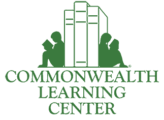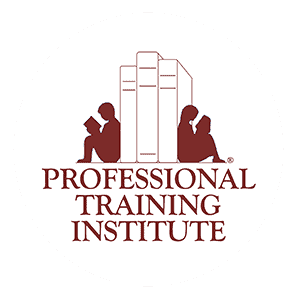
I have researched and adapted study skill strategies from books and seminars, colleagues and classmates, and also from the many students I have taught over the years. Those I am sharing here have proven themselves to be quick to learn, easy to apply, and have been rated by my students as the most effective and useful to them in preparing for their weekly tests and quizzes at school.
You will find these strategies useful for the most common types of tests or quizzes students face: teacher-made, content specific assessments that evaluate basic knowledge and understanding. These strategies teach students to learn and memorize facts and data in ways that make it possible for them to recall and re-use not only for tests and quizzes, but also to build their background knowledge, and inform their critical thinking skills such as comparing and contrasting, or organizing causes and effects.
The strategies I have chosen fall into three rough groups: quick, thick, and stick. The quick strategies are useful for situations in which students have either very little time to prepare, or for times when students want to plan several short study sessions over a period of time.
1) True/False is not only a typical test question format, but is very useful as a quick study strategy. Many types of factual information can be formulated into true or false statements. For example:
- The First Continental Congress met in Philadelphia in 1774.
- The sum of the measures of complementary angles is 90 degrees.
- The process of meiosis results in four daughter cells.
An important tip for creating true/false statements is to have the student emphasize creating mostly false statements. The reason for this has to do with our stronger tendency to strive for correct answers. As the student writes the false statement, her brain is alerted to the error and more memory effort is used to mentally correct the statement. Thus, the process alerts students to pay attention to which statements are false and why. Students should write the true/false statements during one study session, and then review and correct any false statements during a second study session.
2) Difference Between is not a typical test question format, although I have seen it come up on occasion. This technique is useful for terms that are closely related and which students could easily confuse. For example:
- What is the difference between complementary and supplementary?
- What is the difference between classification and taxonomy?
- What is the difference between a republic and a democracy?
Students should write and answer one or two Difference Between questions during a short study session. This strategy is useful for short-answer question test formats.
3) Not Your Average Flashcards is a technique I adapted for students who get bored easily with traditional flashcards. It is also useful for students who struggle with recall and need the reinforcement of seeing the whole picture to store information in memory. Students can use whole index cards, or cut index cards in half to create flashcard sets. The sets typically have a paired match such as one card with “4 + 3,” and a second card with “7.” The backs of the cards are blank. Students shuffle or mix up the cards, and then spread them out and select cards that match. Students could also sort cards according to simple logic, such as one set of cards that are the names of historical people to be memorized, and another set for historical places or events. Another example would be a set of cards with states and state capitals. The state cards could be sorted alphabetically or regionally and then matched with the appropriate capitals.
Students should create a limited set of cards during one session, and then practice with those cards before creating more cards. Once a set of cards is complete, students should work to eliminate or cull cards that they have mastered and focus on cards containing facts they still need to work on.
The thick strategies are useful for situations in which students have too much information for the quick strategies to be useful. The thick strategies also work to link some facts with other facts and knowledge, and can be adapted by the student for various content areas. These techniques are good starting points for building critical thinking skills.
4) Categories is a technique that is useful for sorting multiple related facts under a group. Often, students are presented with a topic and examples, or a topic and sub-topics. Memorizing and recalling such a load of information can be daunting unless there is some logical “chunking” of information pieces to make memorization and recall easier. For example, students may need to memorize the complex vocabulary related to shapes (isosceles, kite, rhombus, scalene, obtuse) and could sort them according to the number of sides of the figures, limiting the vocabulary load for each category and at the same time relating specific vocabulary to a specific category. For example, scalene, isosceles, and obtuse are all terms related to shapes with three sides. Another example would be facts or events in social studies which could be categorized as being political, social, or economic. For example, the Temperance Movement would be in the social category, but an election issue such as a jobs program would be political, and a law to regulate banks would be economic.
Students should attempt to create their own categories, but they may need assistance with this at first. Providing some example categories for students is a good starting point. Also, keep in mind that many times categories are not absolutely definitive. For example, a law to regulate car safety may fit under both economic and social categories. Students should be guided to make reasonable choices for category names, and also guided to understand that categorizing is for the purpose of aiding memory and recall of information, not always for absolute accuracy. Students can use lists or outlines to write items that fit a category. They can also write the items on index cards or sticky notes and sort them into categories for memorizing.
5) General and Specific is another technique that is useful for sorting information, this time into main ideas and details. This technique can help students understand the hierarchical relationships between pieces of information. For example:
- Meiosis is a type of cell division.
- Red, blue, and green are the primary colors of light.
- All mammals are warm-blooded, have hair, and feed milk to their babies.
It is important to recognize that many students have difficulty generalizing. They can recognize specific related details, but often have trouble deciding how to describe the higher-order group into which those details fit. This technique can help reinforce details from the specific to the general or the general to the specific. Students can use lists or outlines to write specific items that fit a generalized topic. They can also write specific items on index cards or sticky notes and sort them under general topics for memorizing.
The stick strategies are useful for situations in which students need multi-sensory input in order for information to stick in their minds. Students are often told to simplify their study habits, but as the saying goes, “the nose falls asleep quickly,” which means that after smelling a scent for a period of time the nose no longer registers the smell. The brain works the same way, so in order to perk up the brain’s interest in mundane facts, students need to apply some multi-sensory, or elaboration techniques to alert the brain that the information is important, and memory effort and space should be devoted to it.
6) The Location method involves touch. Students with a list of vocabulary words to memorize or a list of facts such as the names of the planets in our solar system, should select a room in their home in which to work. The student then walks around the room, touching familiar objects (mirror, lamp, picture, window, piece of furniture). With each touch the student says the name of the word to be memorized and any related information. For example, “Mercury is the planet closest to the sun.” After several practice runs, the student should try to sit in one spot and visualize himself walking, touching the objects, and saying the information. Later, when taking the test or quiz, the student can mentally retrace his steps, recalling each piece of information spoken in practice.
7) The Elaboration technique uses position or visual enhancement to add mental weight to the memorization process. One example is to sit at a desk with a set of 4 – 8 flashcards. The student pictures a large analog clock in front of them and picks up the flashcards one at a time, saying the information on the card and placing the cards sequentially at imaginary positions of the clock (12pm, 3pm, 6pm, 9pm). The mental vision of the clock, along with the information to be memorized, creates an elaborated memory. During a test or quiz, students can call up the memory of the clock positions which are now linked with specific information that was memorized. Students can also use colors, diagrams, symbols, or drawings to enhance information. Memories elaborated in such ways are easier for students to recall because they are more robust than ordinary memories.
These strategies serve as the basis for study habits that will give students an initial sense of success. Practicing and adapting the strategies for their particular needs and learning style offer students a starting point for purposeful study habits along with a specific set of techniques for how to study.
Some strategies were adapted from the following resources:
Earnst, John ( 1996) Middle School Study Skills, Teacher Created Materials, Inc. Huntington Beach, CA
Sedita, Joan (1989) The Landmark Study Skills Guide, Landmark Foundation, Prides Crossing, MA
Strichart, Stephen S., Mangrum, Charles T. II (2002) Teaching Learning Strategies and Study Skills to Students with Learning Disabilities, Attention Deficit Disorders, or Special Needs, Allyn and Bacon Publishers, Boston, MA










Jaydin Skinner says: